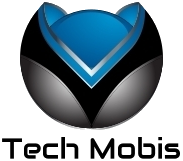
Device descriptor request failed .. USB flash drives have transformed the way that people carry data. If you’re old enough to remember, we’re sure that you do not miss the days of 1MB floppy disks or 64MB zip drives; USB flash drives changed the way that people store and carry their data in a way that was previously inconceivable. Today, you can easily pick up a 64GB flash drive – which is 6,400MB in storage – and carry one in your pocket. Despite the exponential advancement in technology, users of USB drives still run into issues when using this technology. Here are some of the most common USB drive issues and how to solve them.
Contents
USB Device Not Recognized OR Device Descriptor Request Failed :-

Device Descriptor Request Failed – Perhaps the most common error for all USB drive users, the “USB device not recognized” is generally a very easy fix. In a perfect world, your computer will always recognize the USB drive and then assign it a drive letter; however, this is not always the case. Try these simple steps to fix the issue:

- If it is a simple glitch in the operating system, this can be taken care of by either restarting your computer or turning it off completely. If this doesn’t work…
- Try inserting the USB drive into another USB port in the computer. If you have the option to plug it into another computer, this can tell you that:
A) There is a problem with the flash drive itself, or…. - B) There is an issue with the computer, which may be solved by updating the driver.
- Sometimes a simple update or reinstall of the USB driver software can fix the issue (a ‘driver’ meaning the group of files and software necessary to access the hardware utilized by the USB drive). Generally, steps 1-3 will fix the issue, or the Windows troubleshooting feature will fix the issue. For the following steps, only experienced Windows users should edit the registry, as it can cause fatal errors in the operating system if done incorrectly.
Device Descriptor Request Failed windows 10
To remove the driver, follow these steps:
- On older versions of Windows, Click “Start”, then right-click “Computer” and choose “Manage”. “Computer management will open up. Then, click “Device Manager” and finally “Universal Serial Bus Controllers”.
- There should be an entry with a yellow flag. Double click the flagged icon and click “Uninstall”.
- On newer versions of Windows, simply go to “Settings” found in the start menu and search “Device Manager”. Then, follow the steps listed above.
- If a device is not recognized, Windows will generally troubleshoot and be able to do these steps for you; however, it is always useful to know how to perform this action manually.
- A final resort: if none of the above steps work, try uninstalling every instance of “Unknown device, “USB Root Hub”, and “Host Controller” drivers. Then, Windows should begin to update the drivers automatically.
USB Flash Drive Write Protect Error / Cannot Format USB Flash Drive
While these issues can be two of the more frustrating problems that you may run into with a USB drive, both are handled in a similar fashion. You’ll want to start by running Regedit.exe. This can be found by performing a search in the start menu or by finding the folder named “Windows System” and clicking on the “Run” application. Then, input “Regedit.exe”.
- Navigate until you find the directory: Computer\HKEY_LOCAL_MACHINE\SYSTEM\CurrentControlSet\Control\StorageDevicePolicies
- Double click the “WriteProtect” value in the right-hand pane and change the value from 1 to 0.
- Restart your computer.
- Generally, this will fix both of these issues.
Device Not Detected
There may be an issue with the actual USB port on your computer if the device is not detected when you insert the USB drive or if you receive an error message when inserting the device. For the latter, simply try unplugging and re-plugging the device; if that doesn’t work, try restarting the computer.
If the device is not detected, try using a different USB port. If this is the case, one of your USB ports may be damaged. Many things can cause damage to a USB port, such as dirt, debris, overuse, or hardware failure. If the USB port wobbles in place, this may be telling of a hardware issue. Before bringing it into a repair store, try cleaning the USB port with compressed air.









